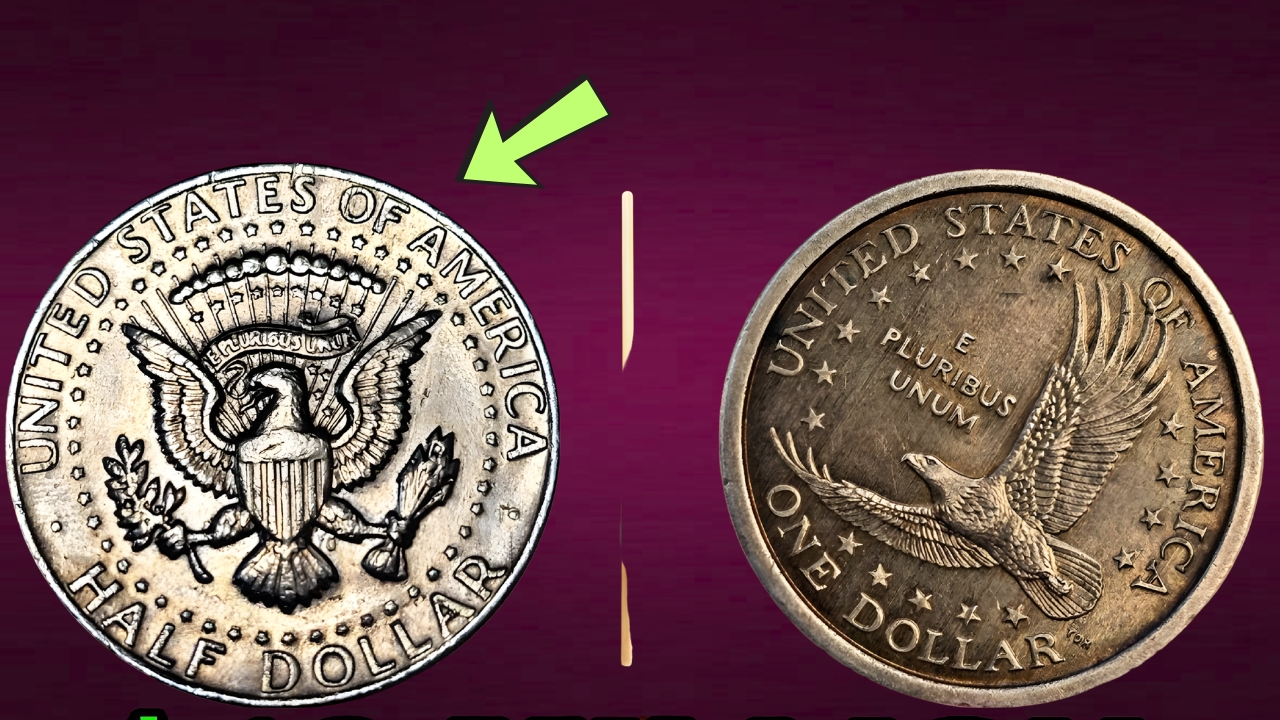When it comes to U.S. coinage, few pieces carry as much heart and history as the Sacagawea Dollar and the Kennedy Half Dollar. These two coins are more than just metal tokens — they’re reflections of America’s values, its heroes, and its evolving story. Both stand as proud symbols of heritage and hope, and to be fair, each has its own unique fan following. But what makes them so special? Let’s take a closer, more human look.
A Tale of Two Icons
The Kennedy Half Dollar was first minted in 1964, just months after President John F. Kennedy’s assassination. The nation was grieving, and the coin was created almost as a collective act of remembrance. Its design, featuring Kennedy’s dignified profile, became an instant hit. People hoarded it, not for its 50-cent value, but for what it meant. It was a tribute — tangible, shiny, and deeply emotional.
On the other hand, the Sacagawea Dollar, first issued in 2000, brought a different kind of symbolism. It celebrated Sacagawea, the Shoshone woman who guided the Lewis and Clark expedition. Unlike the Kennedy Half, this coin wasn’t born of tragedy but of inspiration — highlighting a Native American woman who shaped U.S. exploration and history.
Design That Speaks Volumes
The Kennedy Half Dollar was designed by Gilroy Roberts (obverse) and Frank Gasparro (reverse). Kennedy’s portrait is strong and presidential, while the reverse features the Presidential Seal — an eagle clutching arrows and an olive branch, surrounded by stars. It screams patriotism in every way possible.
The Sacagawea Dollar, meanwhile, was crafted by Glenna Goodacre. The obverse shows Sacagawea carrying her infant son, Jean Baptiste, symbolizing courage and nurturing. The reverse, originally designed by Thomas D. Rogers, depicts a soaring eagle, representing peace and freedom. Honestly, it’s one of the most beautiful coins in modern circulation — soft gold in color and rich with meaning.
Composition and Feel
Physically, these coins feel very different. The Kennedy Half Dollar has a substantial weight and a silvery shine. In its first year, 1964, it was minted in 90% silver, making it particularly valuable to collectors today. Later years used less silver, and eventually, the coin was mostly copper-nickel clad.
The Sacagawea Dollar, on the flip side, has a golden tone thanks to its manganese-brass alloy. It’s lighter, more modern-looking, and designed for circulation — though ironically, it rarely stays in wallets long. Many people collect them or use them for ceremonial purposes.
Cultural Impact and Collectibility
The Kennedy Half Dollar became a patriotic symbol — a coin that everyone recognized, even if few spent it. It carried emotional weight, especially for those who lived through the 1960s. To this day, collectors treasure the 1964 silver edition and the 1965–1970 silver-clad versions. Some of these can fetch hundreds of dollars in pristine condition.
The Sacagawea Dollar, meanwhile, represents something more progressive — a recognition of indigenous history and women’s contributions to America’s foundation. Over the years, it has evolved through the Native American $1 Coin Program, featuring changing reverse designs that honor tribal achievements, agriculture, and innovation.
While the Kennedy coin honors leadership, the Sacagawea Dollar celebrates guidance and resilience. In a way, both tell complementary sides of the American story — strength and service, courage and compassion.
Modern Use and Legacy
To be fair, neither coin sees much use in daily transactions anymore. Half dollars are minted mostly for collectors, and Sacagawea dollars circulate primarily through limited releases and special programs. But that doesn’t make them irrelevant. In fact, these coins have found new life in the world of collectors, historians, and those who simply appreciate American symbolism.
Think of them as time capsules. Each time you hold a Kennedy Half Dollar, you’re holding a piece of a nation’s grief turned into pride. Each Sacagawea Dollar reminds us of endurance, guidance, and the vital role women and indigenous people played in America’s journey.
Quick Comparison Table
| Feature | Sacagawea Dollar | Kennedy Half Dollar |
|---|---|---|
| First Minted | 2000 | 1964 |
| Honoree | Sacagawea (Shoshone guide) | John F. Kennedy (35th U.S. President) |
| Composition | Manganese-brass clad | Originally 90% silver, later copper-nickel |
| Designer(s) | Glenna Goodacre (obverse), Thomas D. Rogers (reverse) | Gilroy Roberts (obverse), Frank Gasparro (reverse) |
| Circulation Purpose | Promote $1 coin use and honor Native history | Tribute to Kennedy, symbol of unity |
| Current Use | Limited circulation, collector’s item | Mostly collector’s item |
| Iconic Symbolism | Guidance, diversity, endurance | Leadership, patriotism, remembrance |
At the end of the day, both coins — the Sacagawea Dollar and the Kennedy Half Dollar — are miniature works of art. They’re not just currency; they’re storytelling tools in metal form. The Kennedy coin speaks to the nation’s respect for a fallen leader, while the Sacagawea Dollar reflects America’s ongoing journey toward inclusion and recognition of overlooked heroes.
Honestly, it’s hard to pick a favorite. One represents the heart, the other the soul of America. Together, they form a beautiful balance — a reminder that leadership and guidance, memory and progress, all shape what it means to be truly American.
FAQs
1. Are Kennedy Half Dollars still made today?
Yes, but mostly for collectors. They’re produced by the U.S. Mint each year in limited numbers.
2. Is the Sacagawea Dollar made of real gold?
No, it only has a golden color due to its manganese-brass alloy. There’s no real gold content.
3. Which coin is more valuable?
Older Kennedy Half Dollars, especially from 1964, are more valuable due to their silver content. Sacagawea Dollars are collectible but not as valuable in metal terms.
4. Why was Sacagawea chosen for the dollar coin?
She symbolizes guidance, courage, and the significant role Native Americans played in U.S. exploration.
5. Can you still spend these coins in stores?
Absolutely — both remain legal tender, though people rarely use them in daily transactions.
